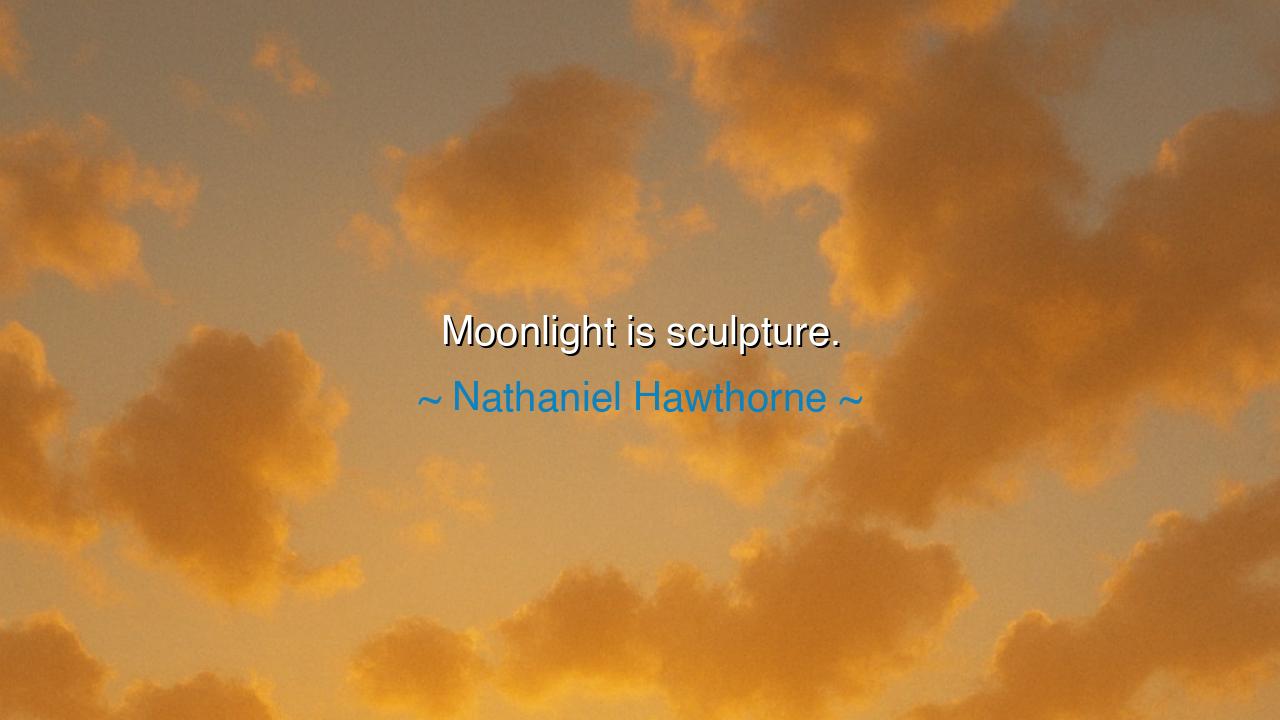
Moonlight is sculpture.






Hear the words of Nathaniel Hawthorne, poet of shadows and light, who declared with vision: “Moonlight is sculpture.” In this brief phrase he draws for us an image of wonder, for the sunlight is painter’s brush, spreading color across the earth, while moonlight is the chisel of the sculptor, carving form, sharpening edges, drawing out depth from the darkness. In the night, colors fade, yet shapes emerge in purity—rocks, trees, mountains, and human faces become like statues in the silver glow. Thus Hawthorne reveals that the world wears two robes: by day, the robe of color; by night, the robe of form.
The meaning is profound. In moonlight, life is stripped of its distractions. No longer does the eye chase the brilliance of red or gold, nor is it dazzled by the endless hues of day. Instead, the soul sees the lines, the structure, the essence of things. The world becomes art in its simplicity, like sculpture, reduced yet exalted, silent yet profound. Hawthorne’s words remind us that in the absence of excess, true form is revealed, and in the calm of night, truth itself appears in sharper outline.
History has often borne witness to the power of the moon to inspire. Think of the ancient Greeks who built temples of marble that gleamed under the silver beams, their statues taking on an almost divine presence by night. To the poet, the moonlight was no mere illumination, but a second artist, revealing qualities unseen in day. The sculptor Phidias, who carved the Parthenon’s figures, may have labored by day, but his creations spoke most powerfully when bathed in the glow of night, becoming what Hawthorne himself saw—sculpture animated by light.
So too in the East, the Japanese poets and monks revered the moonlight as sacred. In the gardens of Kyoto, the rocks, lanterns, and trees were arranged not only for the day’s sun, but for the night’s glow. To walk in the garden by moonlight was to see the world reborn as living stone, every shadow a carving, every branch a gesture frozen in silver. It was not illusion, but revelation, for the moon taught the eyes to see differently, to strip away color and behold form.
Yet Hawthorne’s words are more than description—they are also parable. For life itself is like this: in the bright hours of prosperity, the colors of pleasure dazzle us; but in the nights of trial, the essence of our character is revealed. Just as moonlight sculpts the form of the earth, so too hardship sculpts the soul, showing its true lines, its hidden depths. In the silence of difficulty, what we truly are comes forth in sharp relief. Thus moonlight is not only sculpture of stone, but also of spirit.
O children of tomorrow, take this lesson as your own: do not despise the night, nor the seasons when color seems lost to you. For in such times, your life is being sculpted, shaped into clarity and strength. See the beauty of form when brightness fades; see the truth that emerges when excess is stripped away. The moonlight reminds us that even in darkness, there is art, and in silence, there is revelation.
Therefore, practice this: walk beneath the moon, and let its stillness teach you. Learn to love simplicity, to value form over ornament, to seek essence over distraction. When life’s trials dim your colors, ask yourself: what shape is being carved in me? What enduring form is emerging? For the sculptor works not in haste, but in patience, chiseling little by little until the eternal is revealed.
Thus Hawthorne’s words endure like the marble they describe: “Moonlight is sculpture.” Let them remind you that beauty is not only in the brightness of day but also in the stillness of night. Embrace the shadows, embrace the silver light, and know that even in darkness, life is shaping you into something eternal.






AAdministratorAdministrator
Welcome, honored guests. Please leave a comment, we will respond soon